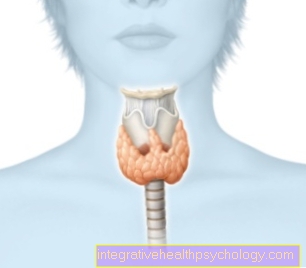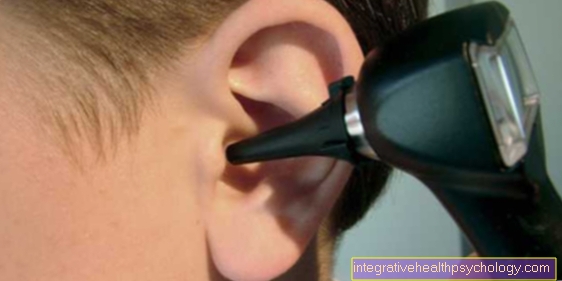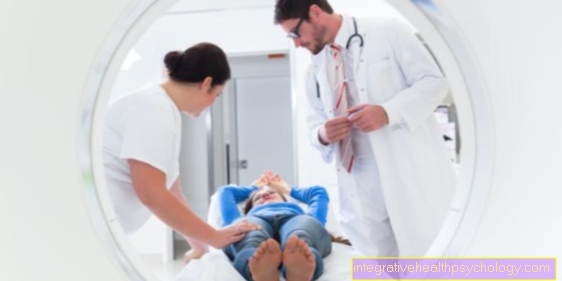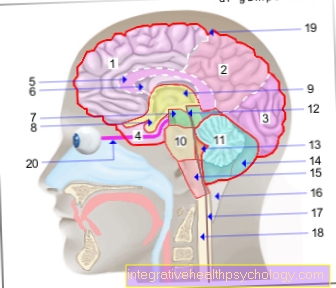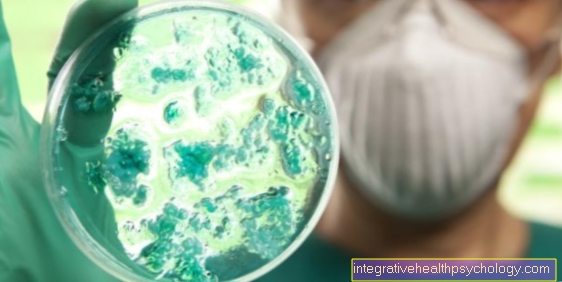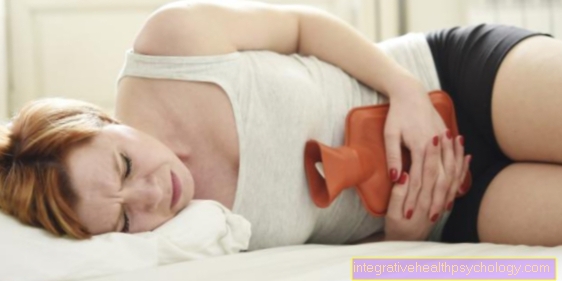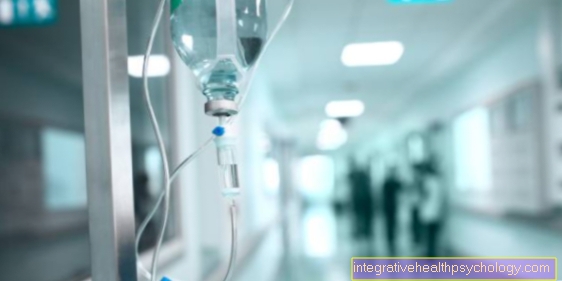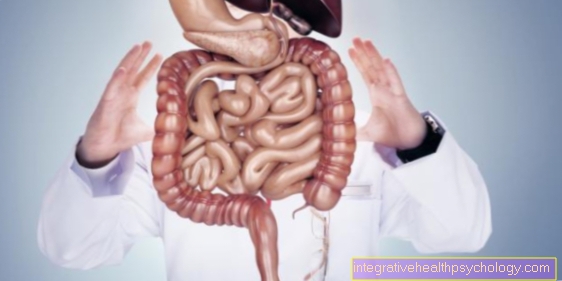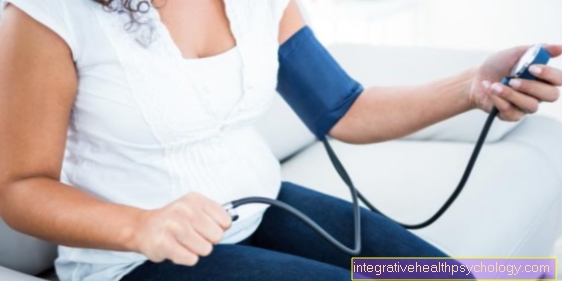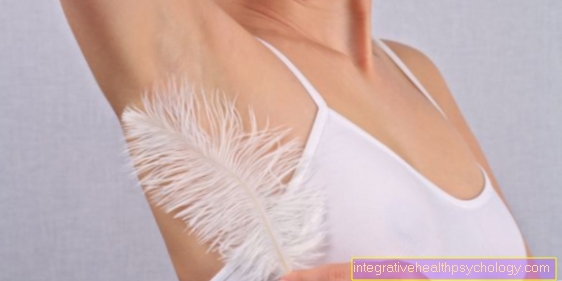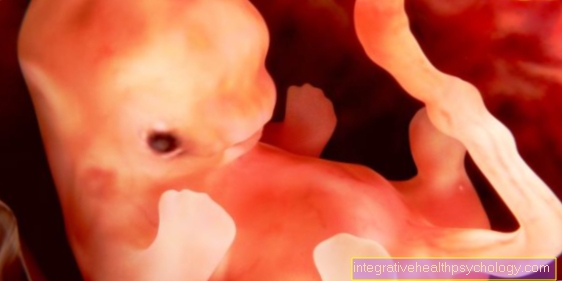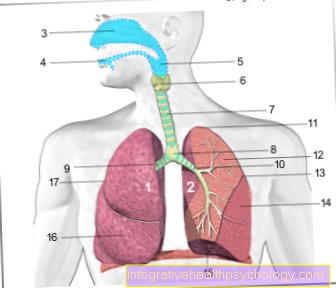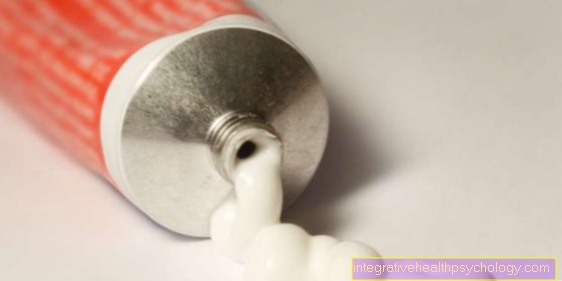These are the symptoms you can tell you have iron deficiency anemia
introduction
Iron is an elementary component of the red blood pigment hemoglobin. This binds oxygen molecules and transports them via the blood to all cells of the human body.
If too little iron is supplied to the body or if there are major losses, iron deficiency can develop over time. At the beginning the body can fall back on its iron stores. If these are used up, blood formation can only take place to a limited extent. Not enough hemoglobin is produced, the red blood cells become fewer and smaller.
This condition is called anemia, because it is caused by iron deficiency, so it is called iron deficiency anemia. This is accompanied by a number of symptoms that can help make the diagnosis easier.
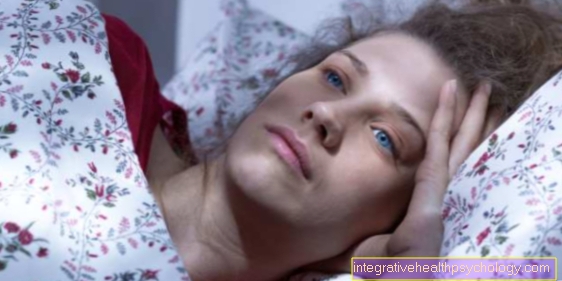
Typical symptoms of iron deficiency anemia
The following is an overview of the characteristic symptoms of iron deficiency anemia. These are then explained in detail according to frequency and relevance.
- Tiredness, exhaustion
- Difficulty sleeping, poor concentration
- Pallor of the skin and mucous membranes
- Dizziness, headache
- Tinnitus
- Shortness of breath
- Fast pulse or racing heart
- Depression and depressed mood
- Hair loss
Pallor of the skin
The first objectively visible symptom is usually persistent pallor of the skin and mucous membrane.
Iron is part of the red blood pigment hemoglobin. If there is less iron in the body, the hemoglobin content in the blood drops. The blood pigment is responsible for the fact that the skin and especially the well-perfused mucous membranes appear rosy. If there is less dye in the blood, the skin appears pale.
It is more difficult to recognize anemia by the color of the skin in people who are naturally very light skin color or have poor circulation and are generally pale. If anemia is suspected, the doctor will therefore primarily examine the mucous membranes of the lower eyelids and the oral mucosa during the physical examination.
Also read:
- Symptoms of iron deficiency
- Consequences of iron deficiency
dizziness
The possible dizziness can also be explained by the lack of oxygen.
Due to the low blood pigment hemoglobin, too little oxygen is transported to the brain via the blood. The brain is very susceptible to a lack of oxygen, and even small fluctuations can cause symptoms such as headaches and dizziness. The symptoms are aggravated under stress, e.g. in the morning while getting up or during sporting activity. The dizziness is often described as vertigo.
In addition to dizziness, concentration disorders often occur at the same time. In particularly severe cases, there may be brief disturbances of consciousness or loss of consciousness (syncope).
- Dizziness from an iron deficiency
- Iron deficiency headache
fatigue
Another typical symptom is tiredness and fatigue, despite getting enough sleep.
The iron-containing hemoglobin binds oxygen in the blood and thus supplies all tissues with oxygen. If the hemoglobin content falls, less oxygen can be transported, the metabolic process takes place more slowly, less energy can be produced, the body is less efficient and tires quickly. Especially after physical exertion, it takes longer for the body to recover.
You may also be interested in this topic:
- This is how you fix an iron deficiency
Depressive mood
Symptoms such as tiredness, fatigue, and insomnia, all of which are caused by iron deficiency anemia, have a negative impact on people's mood. In the long run, a depressed mood or even depression can develop.
In addition, iron is involved in the formation of the messenger substance dopamine. Among other things, dopamine plays an important role in the brain's reward system. Dopamine increases drive, motivation and feelings of pleasure. Serotonin is also formed with the help of iron. Serotonin is also known as the "happiness hormone".
More information on this topic:
- Iron deficiency depression
- What role do vitamins play in depression
Hair loss
Iron is not only found in hemoglobin, but also in a number of enzymes that are involved in important metabolic processes.
An iron deficiency slows down cell division and the cells' ability to regenerate. The hair root cells divide very quickly and are particularly susceptible to a lack of oxygen and energy. If the hair root is not adequately supplied, it dies and the affected hair falls out. In general, the hair becomes increasingly thin, brittle and brittle.
- Hair loss
Sleep disorder
Although people with iron deficiency anemia usually experience tiredness and fatigue, they can often sleep poorly. Other symptoms described, such as palpitations, shortness of breath or tinnitus can affect sleep behavior in the long term.
Noises in the ears often prevent those affected from falling asleep. Heart stumbling and racing heart can be a hindrance to sleeping through the night. Sleep disorders and depressive moods can also have a negative impact on each other.
Tinnitus
There is a suspicion that the development of noises in the ears (tinnitus) is also due to the lack of oxygen in the inner ear. Due to the lack of oxygen, the fine hair cells in the inner ear are undersupplied, which causes a sound sensation disorder. This hearing impairment can lead to changes in activities in different areas of the brain, which can lead to a whistling noise.
If iron deficiency anemia is left untreated, symptoms can worsen and lead to hearing loss. If the iron deficiency is corrected in good time, the tinnitus usually regresses completely.
You might also be interested in this topic:
- Treatment of tinnitus
Racing heart
Due to the low hemoglobin content in the blood, less oxygen is transported from the lungs into the body's circulation. To compensate for this deficit, the body reactively increases the heart rate in order to be able to supply sensitive organs such as the brain and kidneys with sufficient oxygen.
Those affected often notice a faster pulse, palpitations or stumbling of the heart under physical exertion. In particularly severe cases, the pulse is already increased at rest.
Shortness of breath
If there is a particularly pronounced iron deficiency anemia, the body reacts to the falling hemoglobin level and oxygen content not only with an increase in the heart rate but also the respiratory rate.
Patients have the feeling that they cannot get enough air, which can cause anxiety in those affected and worsen the symptoms. The auxiliary respiratory muscles have to be used more intensely due to an increased breathing rate. This requires more energy and more oxygen - a vicious circle.
- Shortness of breath

